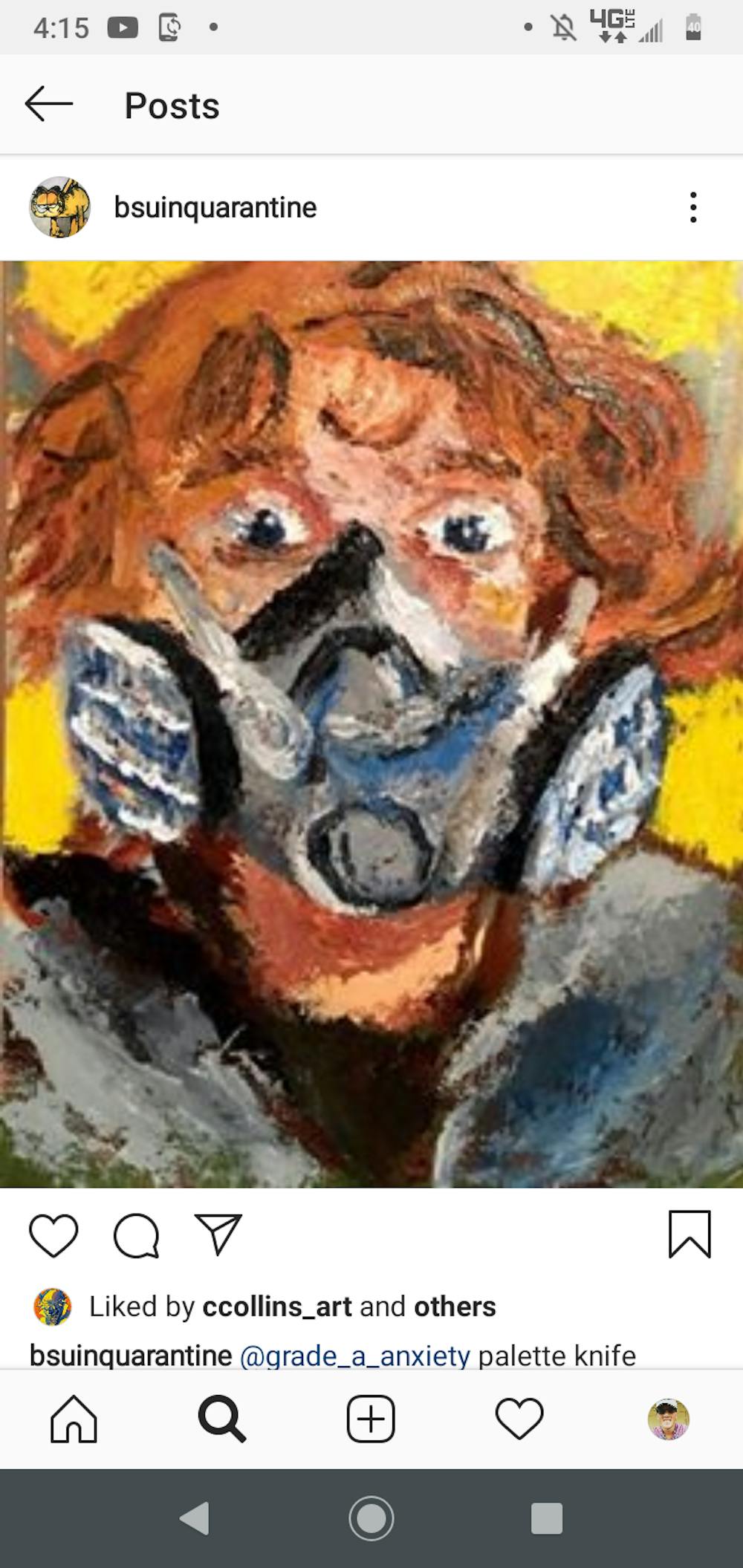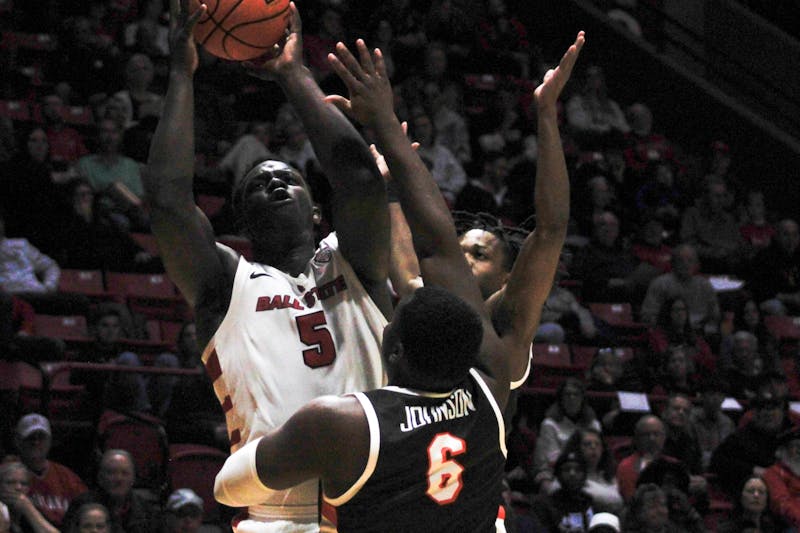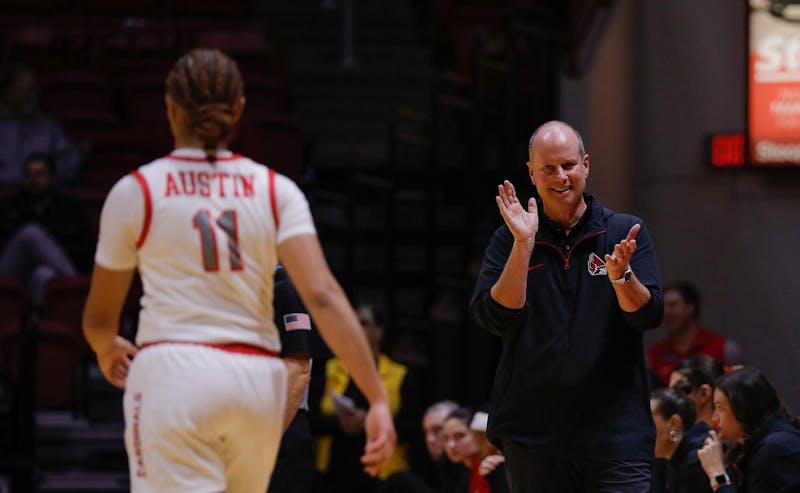A red-haired, wide-eyed face with a hazard mask on looks directly at the viewer. A castle that sits on top of a hill. A cat sitting next to a scattered assortment of paints and brushes. These are the types of images you’ll see on bsuinquarantine.
Bsuinquarantine, an Instagram page that showcased students’ artwork during their time away from campus, was a way Audrey Barcio, assistant professor of painting and drawing, was able to still show what her students had worked on without face-to-face contact.
“Stressful” was Barcio’s initial feeling toward not being able to have her students in class last semester, she said, but once that initial feeling was gone, she saw an opportunity to become more connected to her students.
To prepare to have face-to-face classes again during the 2020 fall semester, Barcio said she took every opportunity “through Ball State and other resources” to learn “how to teach better, how to be better organized [and] how to use different strategies for success for our students.”
According to research done by The Chronicle of Higher Education, 15 percent of its nearly 3,000 institutions sample are doing hybrid-learning. Ball State is listed as a “primarily in-person” return plan in its study.
Barcio said she believes in the students, faculty and essential workers on campus and that they want “nothing better than success.”
“I know everybody misses hanging out and going to parties, but I do think that everybody values their education and their future more,” Barcio said.
Barcio planned for all of her courses to go fully online in the case students and faculty are sent home earlier than the planned time after Thanksgiving break, she said.
However, Barcio said she knows how important it is to have in-person classes for her students, and she trusts her department to make decisions that keep her students safe.
“I have been very careful and have the very best mask and filters I possibly can buy,” Barcio said. “I'm going to do everything that I possibly can do to make sure that my students, first and foremost, are safe and getting the most quality education they can, whether it be in person or online. And then I remain safe, my family remains safe and so on.”
Dom Caristi, professor of telecommunications, also used the summer to prepare for the upcoming semester, doing an “unbelievable amount of webinars, and workshops and boot camps online.”
Caristi said he felt stressed after hearing the news of a complete transition to online classes last semester. He added that while he wasn’t totally unprepared for the change, he was still concerned.
“I have been very actively pursuing recommendations, and skills and the things that I can use in my teaching,” Carisiti said. “I think a lot of the concern was about the fact that we didn't have a guarantee as to when things would shift. I am currently, as of this morning, face-to-face. The plan is to be face-to-face until Thanksgiving. No one can promise that.”
Carsiti said using the summer to prepare made him feel “a lot better” about the upcoming semester than he felt earlier this year.
“I think the advice over and over again was to build a course that could be an online course and that any face-to-face is gravy,” Caristi said.
Caristi teaches three sections of communications law classes with 40 students in each section. He records a 15-minute “mini-lecture,” posts it on Canvas and uses his class time to have discussions with his students.
Douglas Bernstein, associate professor of biology, said he is glad to be getting back into the classroom with his students, but there are challenges about creating the lab experience from home.
This year, Bernstein will be teaching microbiology for the Allied Health Sciences, which will be completely online this semester, he said.
“We didn't really have the option for even trying to do anything in person,” Bernstein said. “It was not a realistic alternative given the amount of social distancing, and the size of the class and things like that.”
Bernstein and his colleagues spent time over the summer creating a new online curriculum that would still provide students with some form of lab experience that is possible from home, he said. Their goal was to make sure the program was “not going to be outrageously expensive for [the students] and would still be safe.”
A higher level course Bernstein will be teaching about recombinant DNA and RNA techniques will still meet in person, Bernstein said. The class will be split in halves with one half attending in person one day and the other half the next.
Bernstein said in this higher-level course, students do a “decent” amount of in-person laboratory work including cloning genes, cloning DNA constructs and making them into plasmids or taking a construct and trying to edit a genome “in vivo” of an organism.
Bernstein said having half of the students there virtually and the other half in class would certainly be a challenge and not something he “would want to try and mimic,” but doing more computer-based experiments “provides a large benefit to the students.”
“You can control the types of things that the students learn, and you can do things much more quickly in that format,” Bernstein said.
Carisiti also said there were some advantages to being able to teach online like having a “back channel” for in-class discussions, relating it back to a student who never spoke in class but was more vocal online and using the chat window.
“While my preference is face-to-face,” Bernstein said, “there are definitely some advantages to doing it online.”
Contact Charles Melton with comments at cwmelton@bsu.edu or on Twitter @Cmelton144.





The Daily News welcomes thoughtful discussion on all of our stories, but please keep comments civil and on-topic. Read our full guidelines here.